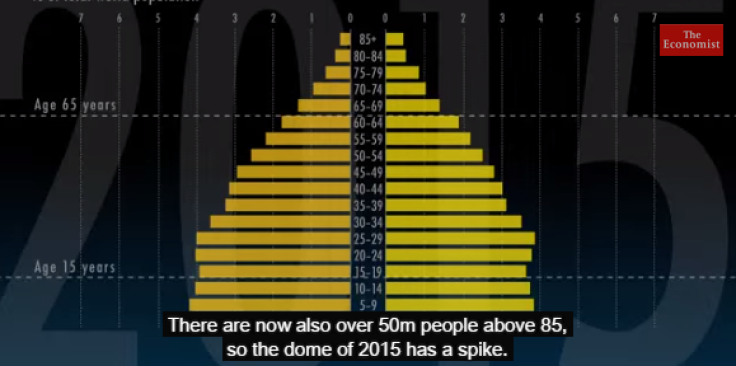Population Pyramid: The World’s Age Demography Has Changed Shape From A Pyramid To A Dome

For all of human history, children have dominated the world — in numbers, at least. Since people began gathering into communities and societies thousands of years ago, children aged 0 to 4 years old have made up the largest age group in the world, followed by kids aged 5-9, 10-14, 15-19, and so forth.
Human existence since ancient times has thus traditionally followed a pyramid shape — with people under the age of 15 making up most of the population, then the numbers lessening in the age groups of 80 and older. This has been called the “population pyramid.”
But in 2015, the population pyramid will no longer be accurate. Soon, we’ll be calling it the population dome to more correctly depict the world’s age groups. That’s because since 1970, the population has been changing drastically. More and more people are living to older years, thanks to improved sanitation and healthcare, as well as new drugs and therapies that cure or treat many illnesses. “The change in terminology will reflect a profound shift in the shape and structure of societies — a shift that has been going on for 50 years and is only half complete,” John Parker writes on The Economist.
Even today in 2014, we’re no longer living in a pyramid. In fact, it’s more of a church dome or something resembling a tower in Cambodia’s Angkor Wat temple. And by 2060, it will no longer be a dome — it may look more like a column.

Earlier this year, the Pew Research Center released an infographic highlighting a similar phenomenon — watching the population period slowly warp into a dome over the course of several decades. By 2060, there will be just as many Americans over the age of 85 as under the age of 5, the PRC states; so the world won't be ruled by ankle-biters. Below, watch the shape of demographics change over time.



























